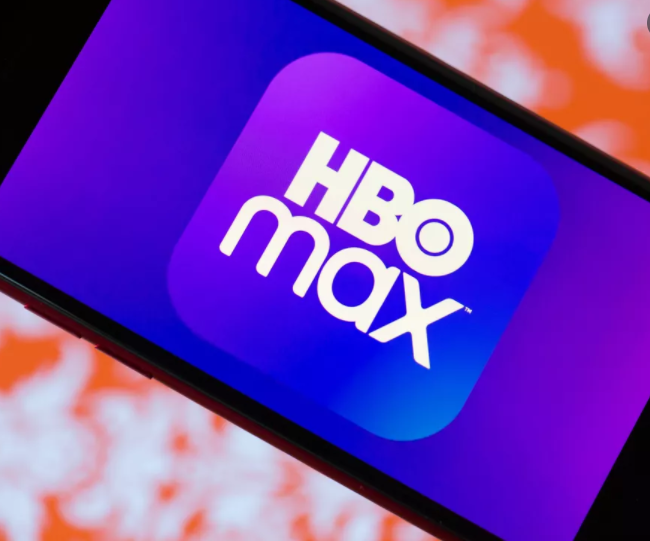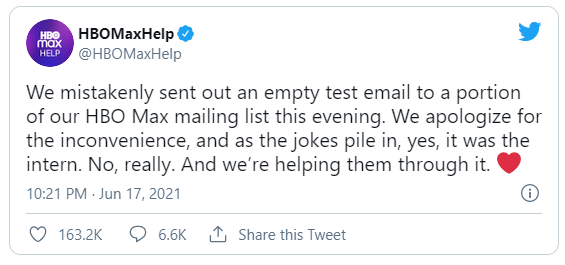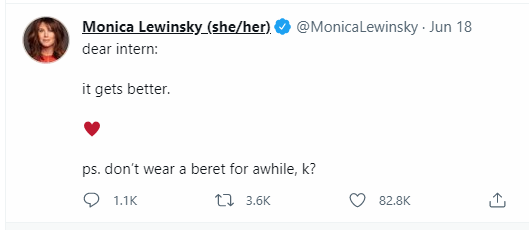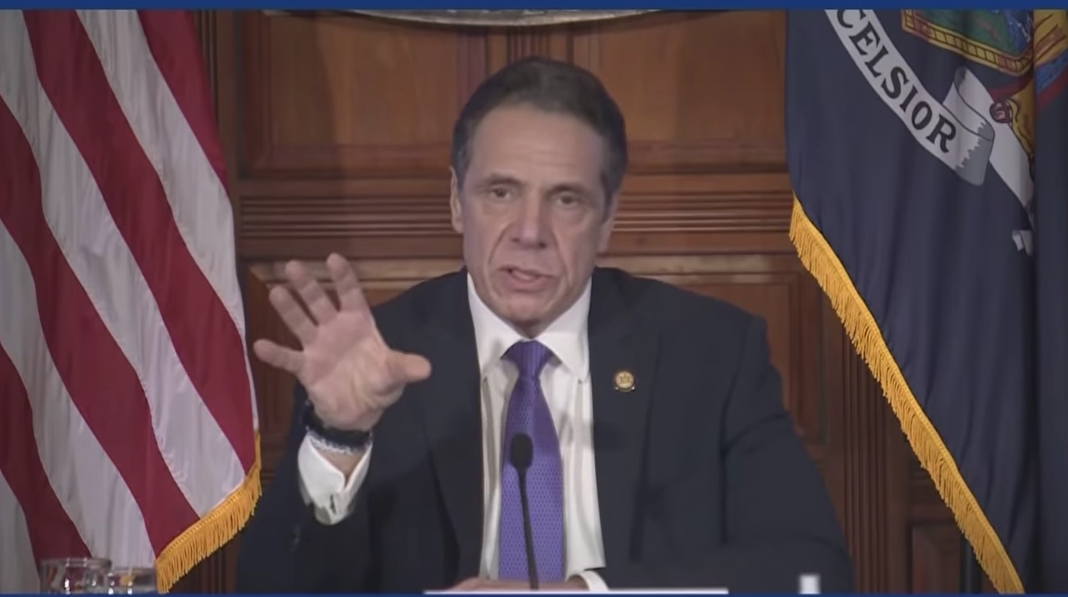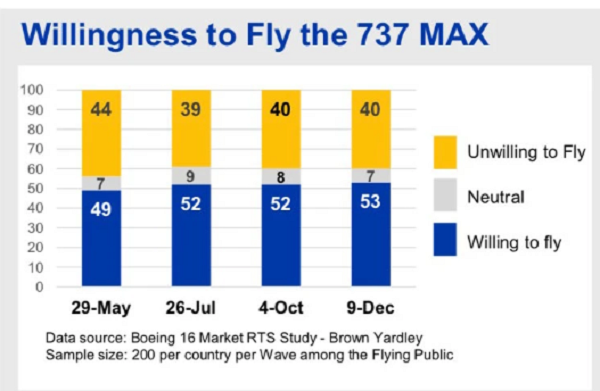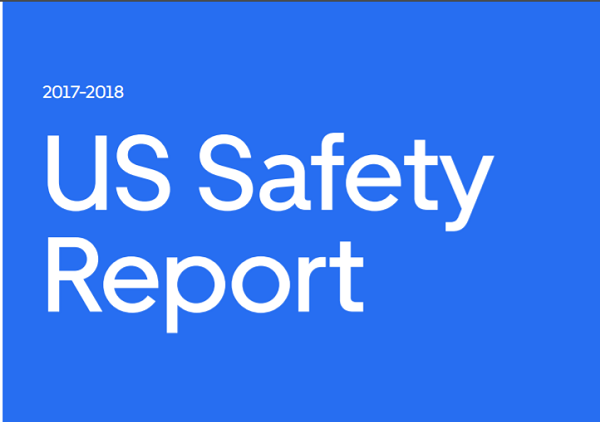CDC Director Has a More Nuanced Approach
A New York Times writer compares CDC Director Dr. Rochelle Walensky’s vaccine messaging in different settings. Analyzing a podcast with someone Walensky likely considers a colleague, David Leonhardt describes her tone and approach as more conversational. He also identifies examples of Walensky’s acknowledgment of a “risk-benefit” assessment—more nuanced communication than we hear from the CDC in its official guidance on news media programs.
Leonhardt gave another example of Walensky’s more flexible stance on vaccines:
Walensky began her answer by restating official C.D.C. policy: “We’re not currently recommending it.” But then she added the fuller truth: “I’ll tell you what we do know, and some places where I think people might veer from standard guidance.”
He summarizes what could be more helpful in health communications:
“Health officials are frequently unwilling to take that second step in public. When confronted with uncertainty, they do not acknowledge it. They ignore gray areas and talk in black and white.”
This situation exemplifies humility as a character dimension. Leaders who admit uncertainty—that they don’t know everything and are still learning—may be more persuasive, not less.
Leonhardt is also describing integrity and, more specifically, transparency. Consistency in messaging, including giving a fuller picture, could help people make rational choices for themselves. That might not result in outcomes the CDC wants—or it might, but not in the exact timeframe or terms that the CDC dictates. As Leonhardt says, “the full truth” would give people more agency and could cause less backlash against prescriptive guidelines.
Painfully Long Peloton Email
This is the second email someone sent me from Peloton CEO and Founder John Foley. Both seem much longer than they need to be. The first paragraph muses on the company success, and the second paragraph introduces the main point—the Peloton Tread. Essentially, this is a sales pitch.
CEO and Founder John Foley organizes the email around three advantages of the Peloton Tread, which are clear and easy to follow. He could use more “you” language to focus on benefits to the reader rather than features of the product. Persuasive business writing tells readers “why” they should want to do what the writer asks.
If you were advising John Foley, what other advice would you offer? Would visuals help the message? How could he reduce the length of the email to increase the chance that people will read it? Read the entire message.
Hi there,
When we founded Peloton nearly a decade ago, we dreamt of bringing high-energy boutique fitness experiences into the home through vertically integrated platforms. That’s a fancy way of saying that we wanted the hardware to be the best in the world, the software to bring the energy and connection of other people into your home, and the content to deliver the inspiration of the most motivating instructors coaching over the best music. I hope you agree that we deliver on that goal already, but I hope you also see that we continue to innovate on the software and content because we always want your experience to get better, a commitment that I made to you back then and I am making to you again today…
But today, I write to you about another platform: The Peloton Tread. Have you ever taken a bootcamp class or a HIIT total body group class or any class involving a treadmill, where the instructor asked you to step off of the treadmill for a more full-body workout? As one of the founders of Peloton, I of course LOVE a great indoor cycling class! As you might guess, so does my wife Jill. But we have found over the years that complementing the fantastic cardio provided by the Peloton App with cardio AND strength training via bootcamp classes is a perfect new part of our fitness journey.
So I wanted to take a minute to share my excitement for the Peloton Tread with you.
Apple Clarifies Policy
Apple software chief Craig Federighi spoke with a Wall Street Journal reporter about a misunderstood policy related to child pornography. The company had announced new reporting guidelines for illegal content. As part of the same message, they described new guidelines about photos sent to and from children. User backlash concerned how the company was monitoring their phones.
Federighi said, “I do believe the soundbite that got out early was, ‘Oh my God, Apple is scanning my phone for images.’ This is not what is happening.” He clarified that, using algorithms, they’re looking at photos stored on iCloud—not on people’s phones. The company is flagging only those photos that meet criteria of child pornography.
During the published interview with the WSJ reporter (what made the final cut on the website), Federighi didn’t emphasize the end goal: protecting children. The reporter provided this context, but the message was not at the forefront’s of Federighi’s main points. His focus was on clarifying the initial message: “I think our customers own their phones,” again, distinguishing what we choose to post on Apple’s server.
Federighi also demonstrated humility by admitting that the message was garbled and that AI technology does make mistakes. In hindsight, it sounds as though Federighi would have announced these guidelines in separate messages with more detail about the photo search process.
Blame the Intern
HBOMax customers received an email with the subject, "Integration Test Email #1,” that obviously wasn’t intended for them. In a follow-up email, the company blamed an intern for the mistake.
Twitter responses poured it to support and empathize with the intern. Embarrassing stories ranged from sending emails to big groups to typos. As an intern, someone replaced all “parties” to “panties” in a 50-page legal document (dare I say “brief”?).
The best was when Monica Lewinsky weighed in.
Interns make mistakes; we all do. Facing the situation with humility—the ability to learn—is the best approach. The HBOMax situation could have been a lot worse, and fortunately, the public turned it around to focus on the shared experience we have all had.
Waitlisted Student Markets Himself
George Joseph White V was waitlisted from Cornell’s Dyson School, and he decided to promote himself. He advertised on the outside of a local bus with a photo of himself and his website. On his website, georgecantwait.com, White lists his hobbies, interests, and other information. He also includes quotes from a few of his teachers.
The approach certainly is creative and gutsy, but is it appropriate? From a business communication perspective, we consider the audience and the message. White describes his qualifications, but he doesn’t say much about how could contribute. What would he bring to the school that might differentiate him from other students on the waitlist?
White also is interviewed by a local radio station, which is posted on his website. He says he believes he’s qualified, and the only reason he wasn’t accepted is that the number of applicants increased. The number did increase, partly because of the pandemic and students taking a gap year and partly because Cornell dropped the SAT/ACT requirement.
Still, perhaps other students were simply more qualified than White, and that’s why he didn’t get in. White also chose an approach that isn’t available to all students: spending money on ads and a website.
When I asked students about the situation in class, they were mixed. Some respected his perseverance, while others thought his approach was too self-promotional and unfair. As one student wrote in chat, “It’s a WAIT list.”
Peloton Announces Recalls
After resisting action despite consumer product warnings, Peloton has conceded and is recalling two models of its treadmills. One child died and more than 70 people were injured, so the Consumer Product Safety Commission (CPSC) recommended the recalls a month ago.
In the company statement, CEO John Foley admitted the mistake:
The decision to recall both products was the right thing to do for Peloton’s Members and their families. I want to be clear, Peloton made a mistake in our initial response to the Consumer Product Safety Commission’s request that we recall the Tread+. We should have engaged more productively with them from the outset. For that, I apologize. Today’s announcement reflects our recognition that, by working closely with the CPSC, we can increase safety awareness for our Members. We believe strongly in the future of at-home connected fitness and are committed to work with the CPSC to set new industry safety standards for treadmills. We have a desire and a responsibility to be an industry leader in product safety.
The CPSC said the decision came after “weeks of intense negotiation and effort.” Peloton will suffer financially: the company has stopped selling the treads and is offering a full refund of more than $4,000 for the products. But executives may have spared themselves and the brand some reputation damage if they had acted earlier.
Beware of Overtalking During Zoom Interviews
People seem to be talking too much during video interviews. A Chronicle of Higher Education article describes two possible reasons.
One is that job candidates want to build relationships and may overtalk in a somewhat desperate attempt to connect. After a year without intimacy, we might be overcompensating. I can imagine this applying to other types of meetings and presentations as well.
Second, visual cues are tough to see on video. The void isn’t quite as cavernous as during phone interviews, but still, it’s difficult to see subtle gestures. Imagine that an interviewer is leaning forward, changing a facial expression, or raising a hand slightly. These could be missed, particularly if a candidate is meeting with a group of people.
Next time you have an interview, try to pay attention to cues and allow people to interrupt you. You might also keep your answers a bit shorter—just in case. Allow time for follow-up questions.
Governor Cuomo Address Sexual Harassment Allegations
In a video statement, Governor Andrew Cuomo addressed sexual harassment allegations made by three women. He begins well, explaining his decision to speak directly to the public on the topic, although lawyers advised him to wait. To preserve his image, this is a good call: research shows that his apology is unlikely to negatively affect lawsuit outcomes—and may even have a positive effect.
But his apology goes awry. He uses language that is classic in non-apologies, for example, “It was not my intention” and “I certainly never meant to….” In sexual harassment law, intent does not matter—only the impact. Further, this type of language typically doesn’t land well. People don’t care. Instead, he should focus on the impact on these women and perhaps on the office.
He also says, “I now understand that I acted in a way that made people feel uncomfortable.” This is problematic because first, as he says at the beginning, he is a lawyer. As a lawyer and as a political leader, he should know better. Such language is reminiscent of “I’m sorry if you were offended,” implying that it’s the receiver’s problem. A couple of days earlier, after the second allegation, the governor said, “To the extent anyone felt that way, I am truly sorry about that.”
To his credit, he says, “I apologize” and “I’m sorry,” which people do want to hear in these types of statements.
We will see what results from these allegations, in the midst of calls for his resignation. Governor Cuomo also is embroiled in charges that he lied about the number of Covid deaths in nursing homes. So far, he says that he will not resign.
School Board Apologizes for Mocking Parents and Resigns
The Board of an elementary school in California resigned over embarrassing comments on a video call. Board members didn’t realize that they were public when they made disparaging comments about parents wanting schools to reopen. They mentioned that parents miss teachers as “babysitters” and want to be able to use marijuana again.
In response, several board members resigned, and the school district wrote a statement. Within the larger statement is a message from the board members who resigned:
We deeply regret the comments that were made in the meeting of the Board of Education earlier this week. As trustees, we realize it is our responsibility to model the conduct that we expect of our students and staff and it is our obligation to build confidence in District leadership; our comments failed you in both regards, and for this we offer our sincerest apology.
We love our students, our teachers and our community, and we want to be part of the remedy to help the District move forward, returning its full focus to students' needs. To help facilitate the healing process, we will be resigning our positions as Trustees of the Oakley Union Elementary School District, effective immediately. The Superintendent will be working with the Contra Costa County Office of Education to address the vacancies on the Board of Education.
This was a difficult decision, but we hear the community's concerns, and we believe yielding to your request that we step down will allow the District to move forward. Please do not let our failure in judgment cast a shadow on the exceptional work that our teachers, administrators and hard-working employees are doing for the students of this District. They deserve and will need your support as you move forward.
Business communication students will find ways to improve this message. The authors use passive voice in the first statement and weak subjects twice in the first paragraph (“it is”). As an apology, the statement also could do better. Sincere apologies include more about the impact of the act—the damage done. I don’t see that recognition clearly.
Questions Are Different for Women in Economics
A working paper shows that women in economics receive more and tougher questions than do their male counterparts. Researchers analyzed data from 462 presentations at seminars and job talks, when candidates present their research to prospective faculty colleagues.
Controlling for fields, types of seminars, and other factors, the researchers found that women receive 12% more questions and more “hostile” or “patronizing” questions. One concern is that woman might be discouraged from presenting their work or applying for positions, which hurts the field of economics.
The authors note that less than one percent of presenters were Black or Hispanic, so no conclusions could be drawn about how these groups are treated.
The authors acknowledge that these questions may not result from ill intent but may be a result of implicit bias or part of a more systemic male-dominated culture. Sadly, the authors say that some comments are “demoralizing,” and again, they warn of the negative impact on the field:
“Many of us have heard stories of friends and colleagues whose bad experiences in seminars have led them to re-evaluate whether a career in economics is really the best choice for them.”
COVID-19 Crisis Communication for Reopening the U.S.
What comes after we “flatten the curve” of COVID cases? New York Times opinion writer Charlie Warzel warns that, without a clear communication strategy for what’s next, people will distrust leaders.
Warzel cites six communication guidelines from the report of a working group at The University of Minnesota, The Center for Infectious Disease Research and Policy (CIDRP).:
Don’t Over Reassure.
Proclaim Uncertainty
Validate Emotions—Your Audience’s and Your Own
Give People Things to Do
Admit and Apologize for Errors
Share Dilemma
Discussion:
How should U.S. officials communicate now? What do they need to accomplish, and how well are our current leaders meeting the challenge? In other words, do you agree with Warzel that our leaders are falling short?
Read the entire report. What other principles does the group recommend?
Analyze the report: the audiences, objectives, writing style, organization, and so on. What are the strengths, and how could it be improved?
A Leader Example in My Book Is Charged With Conspiracy
I was sad to see that Paul Kruse, former CEO of Blue Bell Creamery, has been charged with covering up the listeria breakout in 2015. In my book, Building Leadership Character, Kruse is a positive example of a leader who demonstrates vulnerability. His 2016 video announcing employee layoffs after the breakout was emotional and authentic.
Prosecutors say that Kruse delayed recalling tainted products, instructed employees to tell customers that product delays were caused by mechanical problems, and failed to take other appropriate action.
Blue Bell agreed to pay $19.5 million to the Department of Justice and posted a statement on its website, which focuses more on the future than on the past.
Discussion:
Can you reconcile both perspectives of Kruse as a leader? Could he be someone who covers up listeria and someone who gets emotional when talking about employee layoffs?
Assess the company’s statement. Who are the audiences, and what are the communication objectives?
Companies That Returned Federal Funding
Controversy swirls as companies grapple with whether to keep or return federal funding for the COVID-19 crisis. Distributions from the Paycheck Protection Program (PPP) seem unfair as some small businesses—the intended recipients—can’t get forgivable loans, while some larger businesses received millions of dollars that, at least in some cases, isn’t needed as emergency funding.
As the first and most highly publicized company, Shake Shack returned $10 million. Forbes tallies several others, including Ruth’s Hospitality Group, Sweetgreen, and the Los Angeles Lakers.
Store image source. Food image source.
Discussion:
What’s your view of companies that returned money compared to those that didn’t?
How should a company decide whether to return the funding?
Shake Shack doesn’t include a press release on its website or a tweet about the decision. What’s your view of this approach? Should the company promote the decision more boldly? Why or why not?
Message from Zoom CEO
People who never heard of Zoom are now relying on the company to provide flawless service, but of course we experience problems. In a blog post, CEO Eric Yuan describes how Zoom use has “ballooned overnight” and what the company has done to meet demand and improve the service.
Yuan also expresses gratitude to Zoom users at the end of the post, demonstrating business communication principles and leadership character:
Transparency has always been a core part of our culture. I am committed to being open and honest with you about areas where we are strengthening our platform and areas where users can take steps of their own to best use and protect themselves on the platform.
We welcome your continued questions and encourage you to provide us with feedback – our chief concern, now and always, is making users happy and ensuring that the safety, privacy, and security of our platform is worthy of the trust you all have put in us.
Together, let’s build something that can truly make the world a better place!
Discussion:
Analyze the blog post: audiences, communication objectives, organizational structure, writing style, etc.
What business communication principles does the blog post illustrate? What improvements would you suggest?
What leadership character dimensions are illustrated in this example?
Dupont Announces New Leadership
Dupont has a new CEO, and he looks a lot like a former CEO. Ed Breen was previously appointed CEO in 2015 and was replaced about a year ago. He has been serving as chief executive and will now serve in both roles.
Breen describes the company’s position:
“While we made some progress in 2019, we did not meet our own expectations and we now need to move aggressively to secure our foundation for growth. We have solid businesses, but, as we discussed on our recent earnings call, we need to accelerate operational improvement and make sure we are taking appropriate action to deliver on our commitments for the year.”
In a press release, the company also names a new CFO, Lori Koch, who was previously the head of investor relations.
Discussion:
Analyze the press release: audiences, organization, content, and so on. What business communication principles are followed, and how could the statement be improved?
Compare this release to other leadership change announcements. How does it differ? Consider the tone and quotations.
Boeing's Crisis Communication Plan
During the holiday break, several news items about Boeing were relevant to business communication and character. In one article, the New York Times revealed internal Boeing documents showing a company trying to rebuild its image after two MAX crashes within a year..
The documents give us an inside view of how the company plans to use persuasive strategies to win back customers. In one graphic, we see customers’ willingness to fly. In another, we see customer concerns and ways Boeing can address them, for example, with FAQ cards, “pilot confidence videos,” or personal connections (for example, “Flight attendant offers comfort and information on the safety of the MAX”).
Discussion:
What persuasive strategies does the company plan? Try to find examples of logical argument, emotional appeal, and credibility.
What are the consequences of this information becoming public? Does it likely endear the public to the company’s concerns, embarrass the company, or something else?
JPMorgan Recorded Phone Conversation
Jimmy Kennedy, an African-American former National Football League player, tried to open a private wealth account at JPMorgan but had trouble getting attention. He recorded a conversation with an African-American employee, Richardo Peters, who said, “You’re bigger than the average person, period. And you’re also an African-American. We’re in Arizona. I don’t have to tell you about what the demographics are in Arizona. They don’t see people like you a lot.”
In a New York Times article that published the recording, Peters recounted a specific example of discrimination against a Black customer. When he was trying to bring on another new client, who had received a large settlement, his manager said, “You’ve got somebody who’s coming from Section 8, never had a nickel to spend, and now she’s got $400,000, What do you think’s going to happen with that money? It’s gone.” His manager’s position was that the customer would not invest money with the bank.
Other incidents at the bank led to Peters’ termination, and he is suing for racial discrimination. JPMorgan also recently settled a class-action lawsuit for $24 million to Black employees who claimed discrimination: according to a New York Times report, “in some cases by isolating them from colleagues and dumping them in poorer branches.”
A few days later, CEO Jamie Dimon addressed the situation in a memo to employees.
Discussion:
How do you assess this situation at JPMorgan? Read more in the NYT article.
A February Essence article describes and praises JPMorgan’s Advancing Black Pathways program to support the Black community. What’s your view of the effort in light of this news?
How do you assess CEO Jamie Dimon’s response in the memo? We don’t see the entire memo, but CNBC posted quotes.
Data in the Uber's Safety Report
Uber published its first safety report, and the company is lauded for its transparency. A Wall Street Journal article leads with the number of sexual assaults reported during the last two years: 5,981. Of course, any number is too many—no one should be assaulted in an Uber or anywhere else. And sexual assaults are notoriously underreported, so we have no idea how many have actually occurred.
At the same time, a skeptic might want to know the total number of rides in order to put the number of reports in context. The report does provide this information (see the report for footnotes):
The report makes additional attempts to put the numbers in context:
All of that work culminates in the Safety Report that we are sharing with you, the public, today. To put US safety challenges in context:
• In 2018, over 36,000 people lost their lives in car crashes in the United States alone (3)
• Approximately 20,000 people were the victims of homicide in 2017(4)
• Nearly 44% of women in the US have been a victim of sexual violence in their lifetime—which means that more than 52 million women live with that experience every day (5)
Every form of transportation is impacted by these issues. For example, the NYPD received 1,125 complaints of sex offenses in the transit system during the same time period covered by this report.(6,7) In the United States alone, more than 45 rides on Uber happen every second. At that scale, we are not immune to society’s most serious safety challenges, including sexual assault. Yet when collecting data for that portion of our report, we found there was no uniform industry standard for counting and categorizing those types of incidents.
The 84-page report is incredibly detailed and includes external reports for credibility and the number of charges for various types of assaults.
Discussion:
Analyze the report: the audience, communication objectives, organization, writing style, format. What works well, and what could be improved?
Does the context in these examples convince you that the numbers aren’t so bad? Why or why not?
Otherwise, how well does Uber address the safety issues? How do you assess the report credibility? What other questions do you have?
Why Entrepreneurs Don't Learn from Their Mistakes
A Wall Street Journal article describes research about failing entrepreneurs. The results are sobering: start-up business owners don’t seem to learn from their mistakes.
Francis Greene, at Edinburgh University Business School, explains several reasons for lack of learning. First, when entrepreneurs start new businesses, they have a different context and different customer, so any lessons learned from previous businesses might not apply. Greene also says that businesses typically “limp along”; during this slow-close process, it’s difficult to identify what the real problems were.
Finally, as you might expect, we have psychological barriers for failing to learn from failure. We tend to simplify reasons and blame external factors.
Greene suggests taking time to explore what happened after a business failed and ensuring that we have the industry expertise to succeed in the next venture.
Discussion:
This reminds me of Amy Edmondson’s HBR article, “Strategies for Learning from Failure.” What similarities and differences do see in their research findings and recommendations?
When have you failed? How did you learn from the experience? Can you identify ways to learn better in the future?
Fabricated Letters to the SEC
The U.S. Securities and Exchange Commission is planning a policy change that, as a Bloomberg article describes, “would shift power from investors to corporate boards” and “limit[s] the power of dissenting shareholders.” Unfortunately, when Chairman Jay Clayton announced the change, he cited several fabricated letters of support to the SEC.
The SEC failed to recognize that many letters followed a similar template and included a random line in the mailing address—“A Coalition of Growth Companies.”
Clayton was impressed that the SEC heard from such a variety of people, such as veterans and retired police officers, but people contacted said they didn’t write the letter or agreed to having their name on a letter without understanding the implications.
The Bloomberg article reports Clayton’s response:
The SEC declined to comment on any irregularities with the letters. In a Tuesday interview, Clayton sidestepped a question about how the agency ensures comment letters are genuine. He did emphasize that the regulator’s potential revamp of shareholder voting rules are proposals, adding that there will be ample time for people on both sides to weigh in before any changes are finalized.
“We welcome input in all ways,” Clayton said in the interview with Bloomberg Television’s David Westin. “On this issue, where there are a lot of different views and a lot of different interests, we encourage people to come in and talk to us, send us their comments.”
Discussion:
How does something like this happen? Who is responsible?
Assess Clayton’s response. How well is he handling the situation? What, if anything, should he do differently?
What leadership character dimensions are illustrated by this situation?






